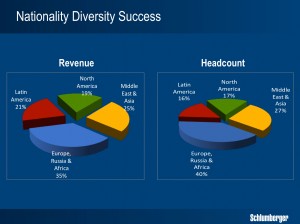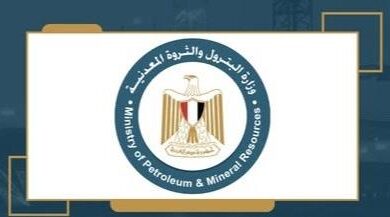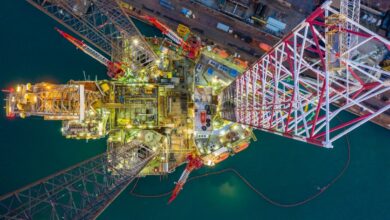Workforce nationalization: Companies take pride in strong recruiting, retention practices
By Katie Mazerov, contributing editor

Nationalization of the work force, a practice the oil and gas industry has engaged in for decades, has benefits beyond simply meeting government requirements and reducing costs. “Nationalism creates a more stable work force, with people taking pride in working where they live, reduces language and other communication and cultural barriers, fosters good community relations, and ensures greater security because national workers can move freely about their countries,” said Michael Rahaim, vice president of human resources for Nabors International. “We are more alike than we are different.” Mr Rahaim and Robert Onyejekwe, human resources manager for Schlumberger, discussed the benefits and challenges of work force nationalization in a panel session at the 2012 IADC Critical Issues Middle East Conference & Exhibition, 4-5 December in Dubai.
Nabors, with a fleet of 123 drilling rigs, operates in 26 countries with a total employee headcount of 9,433, 72% of which is nationalized, Mr Rahaim said. In the Middle East, 53% of the company’s work force is nationalized. “Eighty-two percent of our employees are rig personnel, and that is where we focus our nationalization efforts.”
Nabors takes a three-pronged approach to nationalism, Mr Rahaim explained:
- Recruiting: Understanding of the local culture and clients’ needs, and a focused effort to overcome language barriers and education gaps. “But it’s important to hire people who are a match for the nature of the work and for the culture of the company,” he said;
- Retention: Doing whatever is necessary to keep people at the company and move them into senior positions. “If you don’t have a stable rig manager in place and have constant turnover, you will have downtime and safety issues,” he said. “Our best-performing rigs are those with the longest-tenured crews and a high percentage of national workers.”
- Development of the national work force: Investing in crew training and education and understanding the culture, including such issues as family values and obligations.
Since 1960, Schlumberger has operated by a “recruit where we work” philosophy that is driven by the revenue size of a particular region. The company has four training centers in strategic locations worldwide to build what Mr Onyejekwe described as a “talent pipeline to stay ahead of our time and our competition.”
In developing its nationalized workforce, Schlumberger applies five key steps: recruiting, training and development; borderless careers; identifying talent and succession planning; and knowledge transfer. The company aims to provide employees from every country with opportunities for international experience. “The Schlumberger model is to recruit locally, develop that talent internationally and then move these people back to their home country to take senior roles,” he said. “When our employees go to a meeting or join a new team, they know they will meet new people from different places with different experiences and with different ideas. This is by design and creates a very rich and rewarding work environment for our people. It also drives local client understanding, as well as diverse perspectives needed to get the best solutions for our clients.”
Challenges to this mobility model, such as strict visa and immigration rules in many countries and dual careers, whereby it is difficult for spouses of employees to find work in other countries, require cooperation from governments, he added.
Both Mr Rahaim and Mr Onyejekwe agree that companies need to establish collaborative programs with universities and technical schools, participate in government-sponsored employment events and provide structured career plans and competitive compensation and benefits. Training must be an ongoing process at all levels, with advanced training, especially in the discipline of business systems, made available.
“Crews must be well trained, highly motivated and professionally led,” Mr Rahaim said. “The only sustainable competitive advantage is continuous learning. Organizations that are focused on continued learning will win on a regular basis.”




